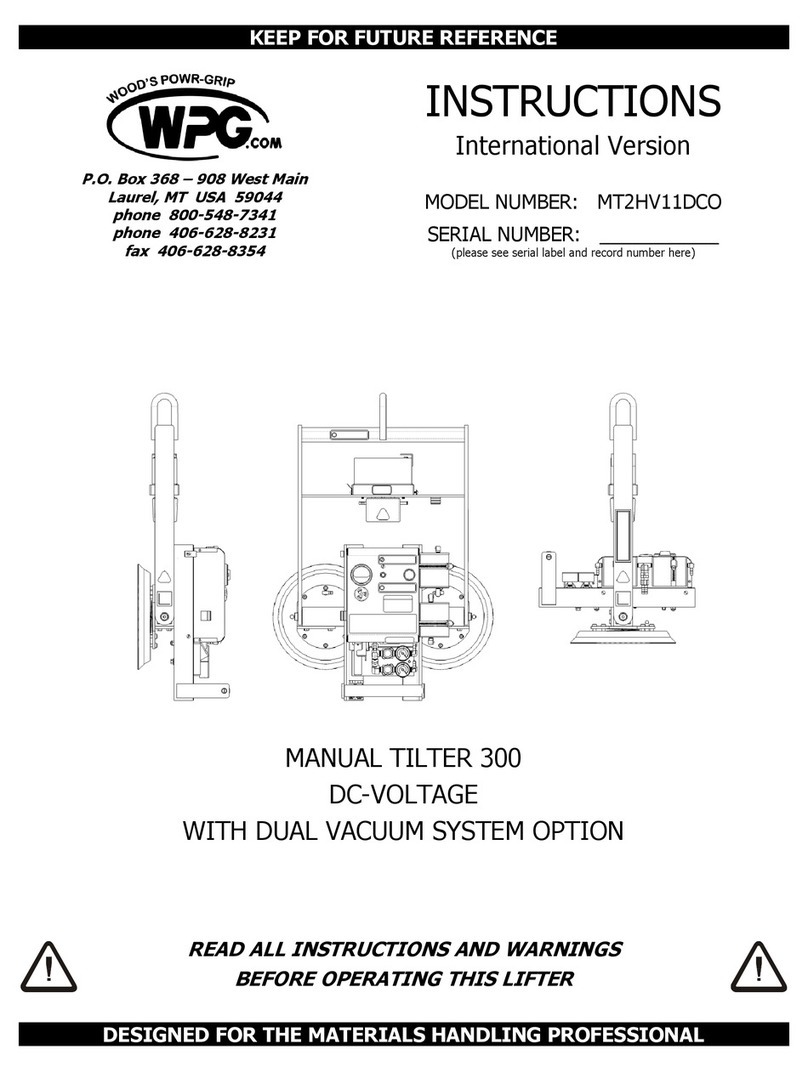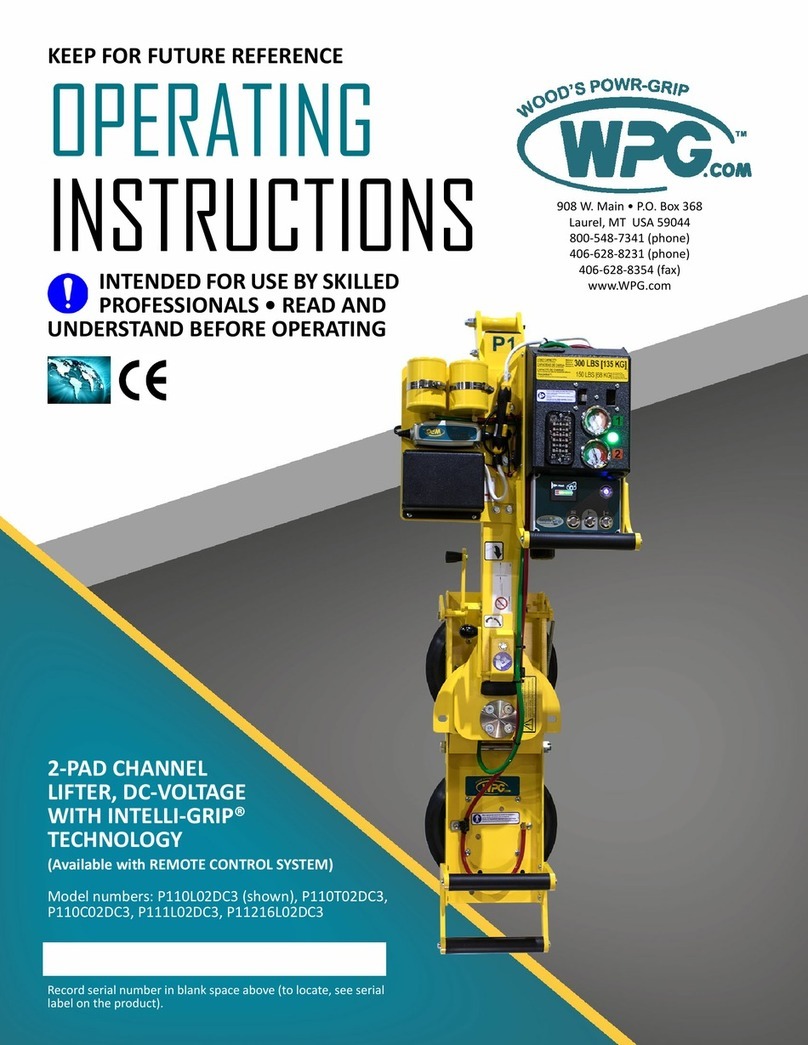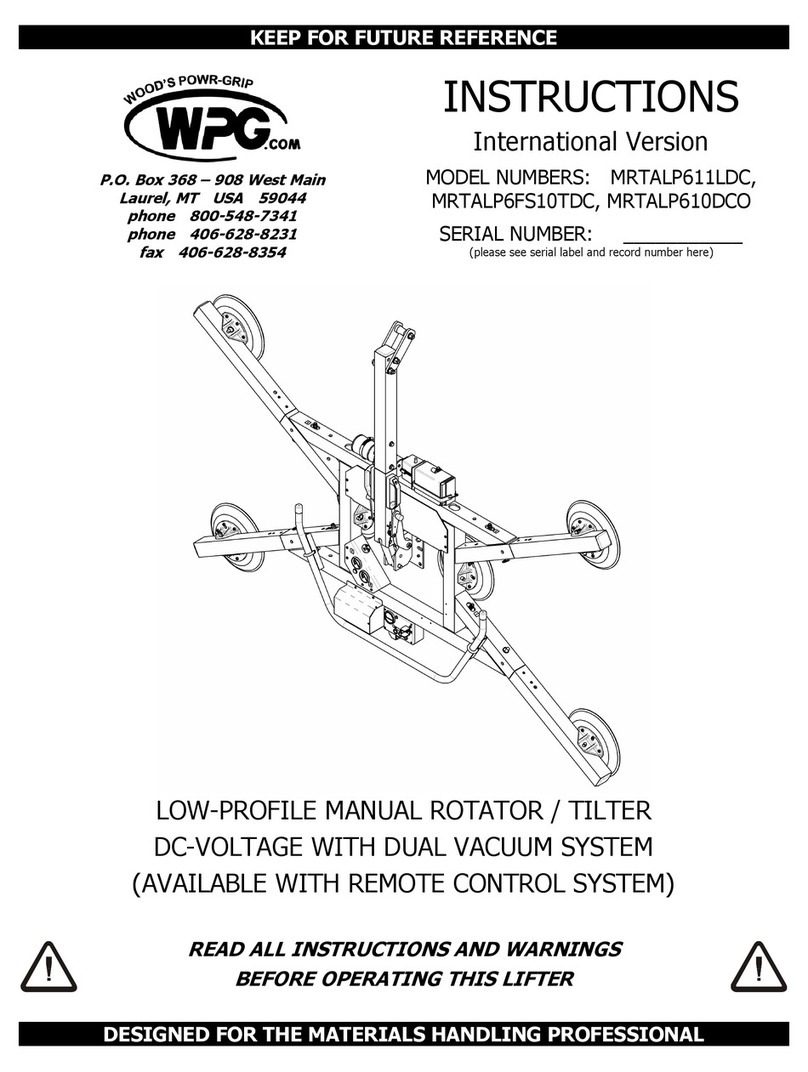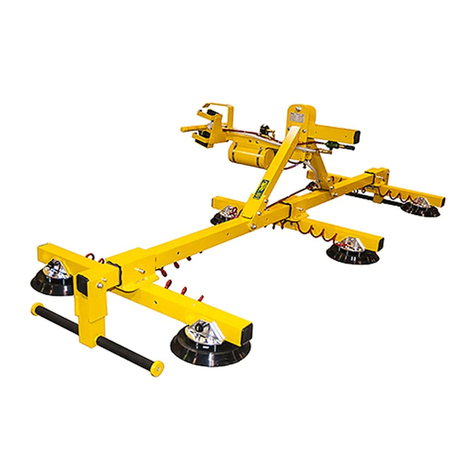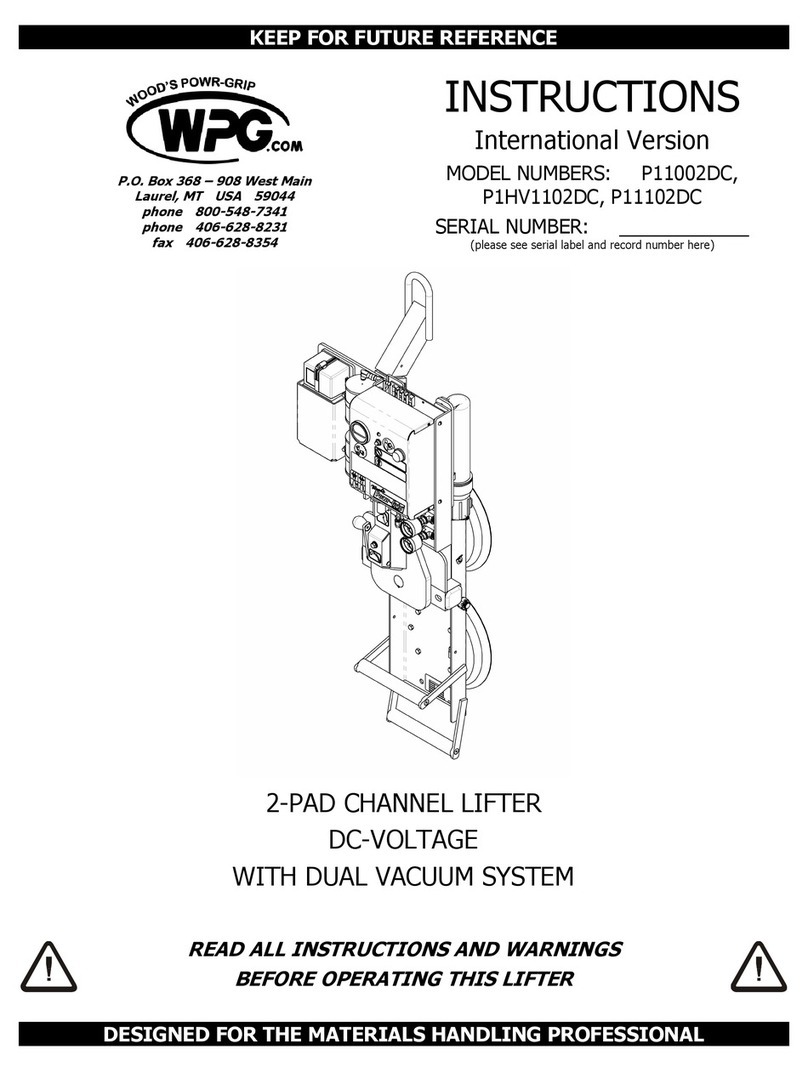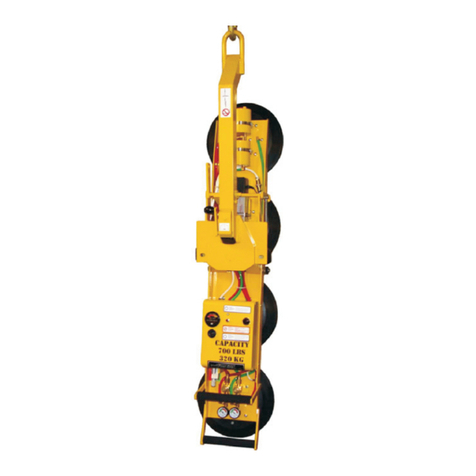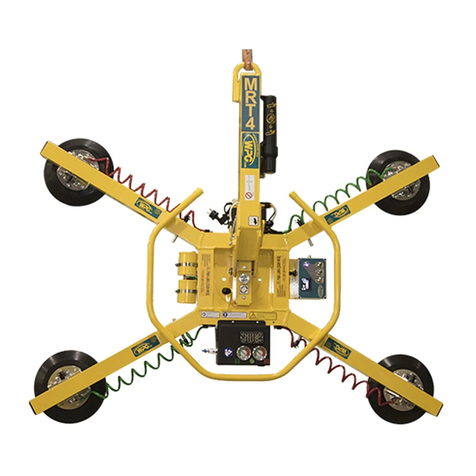
Rev 14.0/5-13 1 MRTA6-DC: #35072
TABLE OF CONTENTS
SPECIFICATIONS............................................................................................................ 3
WARNINGS ..................................................................................................................... 4
OPERATING FEATURES................................................................................................... 5
ASSEMBLY....................................................................................................................... 6
TO SET UP THE LIFTER ................................................................................................................ 6
TO CHANGE THE PAD FRAME CONFIGURATION ................................................................................7
To Connect/Disconnect Vacuum Hoses..........................................................................................................8
To Reposition (or Remove) Movable Pad Mounts ...........................................................................................9
To Install/Remove Extension Arms................................................................................................................9
About Secondary Rotation Stops ...................................................................................................................9
INTENDED USE ............................................................................................................. 10
LOAD CHARACTERISTICS ........................................................................................................... 10
OPERATING ENVIRONMENT .......................................................................................................11
DISPOSAL OF THE LIFTER ..........................................................................................................11
OPERATION .................................................................................................................. 12
BEFORE USING THE LIFTER........................................................................................................12
Taking Safety Precautions ..........................................................................................................................12
Performing Inspections and Tests ...............................................................................................................12
Confirming the Pad Frame Configuration .....................................................................................................13
TO APPLY THE PADS TO A LOAD..................................................................................................13
Positioning the Lifter on the Load ...............................................................................................................13
Sealing the Pads against the Load...............................................................................................................13
Reading the Vacuum Gauges......................................................................................................................14
Vacuum Level on Optimal Surfaces .............................................................................................................14
Vacuum Level on Other Surfaces ................................................................................................................14
TO LIFT AND MOVE THE LOAD ....................................................................................................15
About the Tilt Linkage ................................................................................................................................15
Engaging or Disengaging Tilt Locks.............................................................................................................15
Load Capacity and the Warning Light ..........................................................................................................15
Monitoring Vacuum Indicators ....................................................................................................................16
Low Vacuum Warning Buzzer .....................................................................................................................16
Controlling the Lifter and Load....................................................................................................................17
In Case of Power Failure ............................................................................................................................17
TO ROTATE THE LOAD EDGEWISE................................................................................................ 17
TO TILT THE LOAD ...................................................................................................................18
TO RELEASE THE PADS FROM THE LOAD .......................................................................................18
AFTER USING THE LIFTER..........................................................................................................19
Storing the Lifter........................................................................................................................................19
